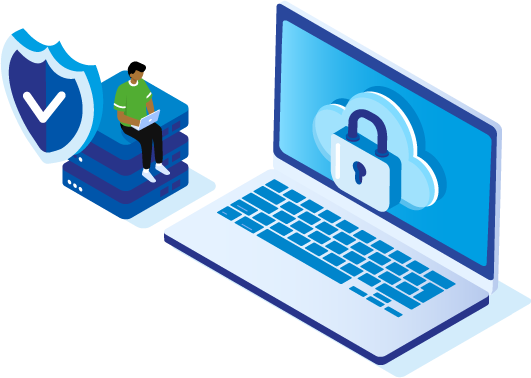Cybersecurity Tips: 5 Ways To Protect Your Data
The digital world we live in has many vulnerabilities. Over the years, the number of cyberattacks has increased drastically worldwide. If there are weak points in your ICT infrastructure, this can have major consequences for your organization. Can you imagine your personal data, or confidential company data being exposed?
Cybersecurity, or Information Technology security, concerns all measures that are taken to protect your data, company network, and other ICT solutions against digital crime.
The internet has become indispensable in almost every organization. We can’t escape the dangers that come with being connected to the internet. What we can do is protect ourselves from all possible threats. With a few basic measures, you can quickly ensure that your data is protected. Here are 5 ways to protect your data.
1. Install anti-malware software
Anti-malware software is a program or set of programs designed to search, detect, and remove malware such as viruses, spyware, trojans, and peripheral malware. Choose the anti-malware software that is best for your organization and update it regularly. Periodically run an anti-malware scan and do not disable it to install new software.
2. Use strong passwords
Select passwords that are difficult for hackers to track and use a different password for each account. It is best to use long, strong passwords that consist of at least 12 characters. Use characters, capital letters, and numbers. An example of a strong password is: ePYHc ~ dS *) 8 $ + V- ‘.
3. Update software timely
Install software patches so that hackers can’t take advantage of common problems or vulnerabilities. Many systems offer automatic updates. Enable this option if it’s available.
4. Physical security
Don’t store documents on your laptop or PC. Use the cloud or an external hard disk instead. If you step away from your laptop or PC, always make sure to lock it. Are you done working? Be sure to turn off your laptop or PC.
5. Be on the lookout for unexpected emails
Phishing emails are currently one of the most common risks. The purpose of a phishing email is to steal your personal data. You’ll be tricked by clicking on a malicious link, leading to the installation of malware on your device, encrypting your data as part of a ransomware attack or data breach. Never click on links in emails or open attachments that seem to come from an unknown email address. If in doubt, be sure to check with your IT department first.



